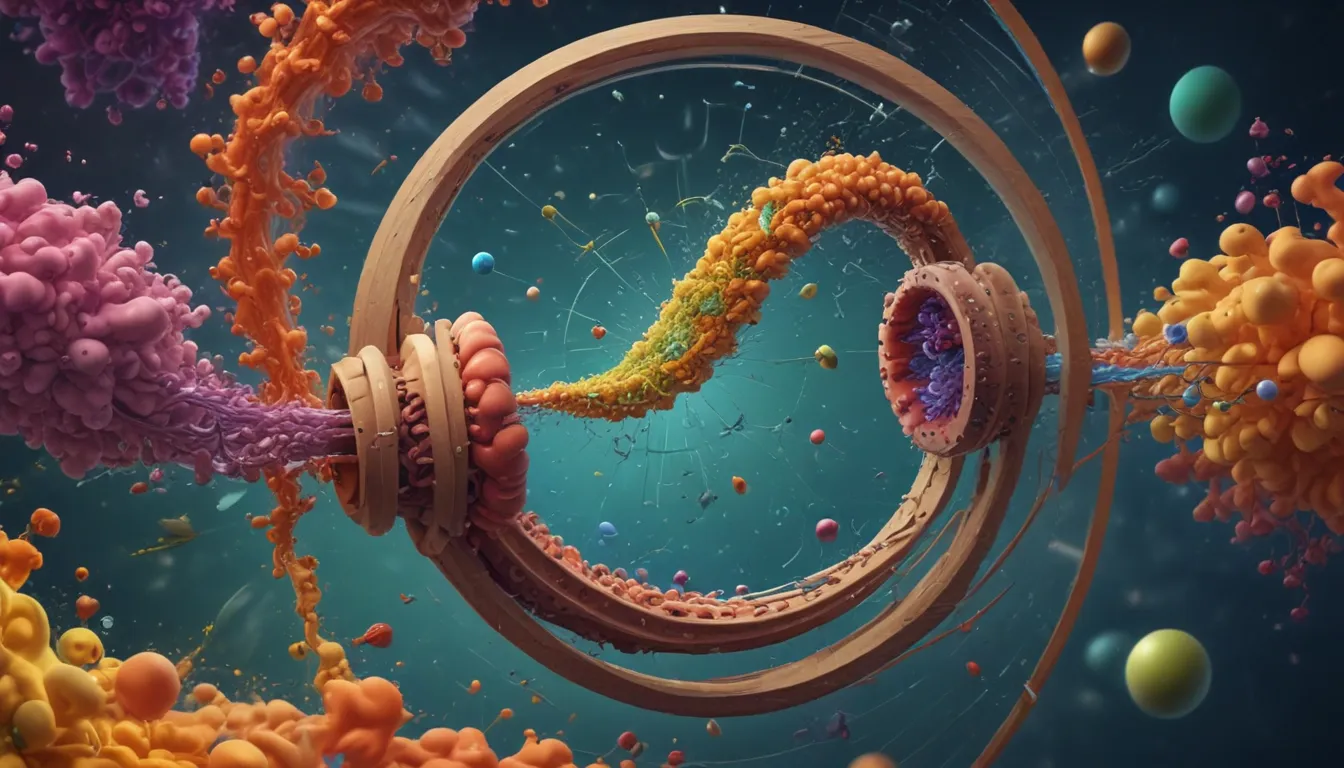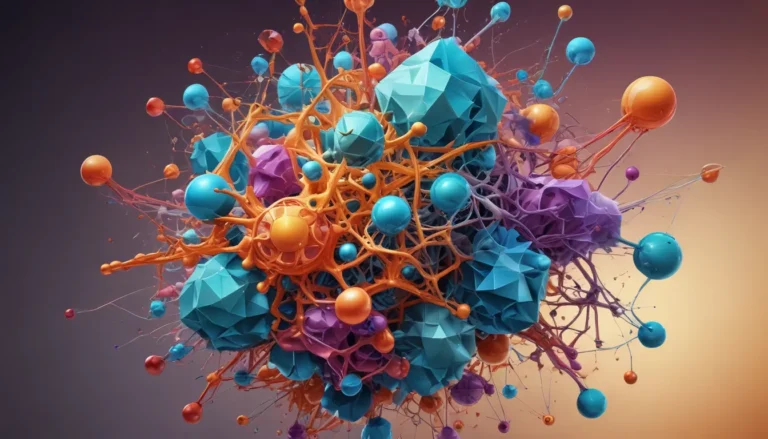A Note About Images: The images used in our articles are for illustration purposes only and may not exactly match the content. They are meant to engage readers, but the text should be relied upon for accurate information.
Are you curious about the intricate world of biochemistry and enzyme reactions? Look no further than the Michaelis-Menten equation, a cornerstone in the field of enzyme kinetics. Developed by biochemists Leonor Michaelis and Maud Menten in 1913, this equation serves as a powerful tool for understanding how enzymes interact with substrates to catalyze chemical reactions.
In this comprehensive guide, we will delve into the enigmatic realm of the Michaelis-Menten equation and uncover 17 intriguing facts that illuminate its significance in biochemistry. From the basics of enzyme-substrate interactions to the practical applications in pharmacokinetics, we will explore the depth and breadth of this fundamental equation. So, fasten your seatbelts and get ready to journey into the captivating world of enzyme kinetics!
Exploring the Michaelis-Menten Equation: Unraveling Its Mysteries
The Michaelis-Menten Equation stands as a pillar in the study of enzyme kinetics, providing valuable insights into the mechanisms behind enzymatic reactions. Let’s dissect this equation and unravel its enigmatic components:
-
Named After Pioneers: Leonor Michaelis and Maud Menten pioneered the development of the Michaelis-Menten equation in 1913, laying the foundation for modern enzymology.
-
Cornerstone of Enzyme Kinetics: At its core, the equation reveals the intricate interplay between enzyme concentration, substrate concentration, and reaction rate, offering a glimpse into the dynamics of enzyme-catalyzed reactions.
-
Essential Components: Represented by V = (Vmax * [S]) / (Km + [S]), the equation features critical parameters such as initial reaction velocity (V), maximum reaction velocity (Vmax), substrate concentration ([S]), and the Michaelis constant (Km).
Unveiling the Insights: Key Facts About the Michaelis-Menten Equation
Dive deeper into the complexities of the Michaelis-Menten equation by exploring these fascinating facts that underscore its importance and applications:
-
Enzyme-Substrate Affinity: The Michaelis constant (Km) serves as a measure of enzyme-substrate affinity, with lower values reflecting higher affinity and vice versa.
-
Maximum Rate of Reaction: Vmax represents the peak rate of reaction achievable when the enzyme is saturated with the substrate, offering a glimpse into the enzyme’s catalytic potential.
-
Linearization Methods: Various techniques, including Lineweaver-Burk plots, Eadie-Hofstee plots, and Hanes-Woolf plots, can be employed to linearize the Michaelis-Menten Equation for analytical purposes.
-
Steady-State Conditions: The equation operates under steady-state conditions, where the formation and breakdown of the enzyme-substrate complex reach equilibrium, enabling a consistent rate of reaction.
Applications Beyond Enzymology: Unleashing the Potential of the Michaelis-Menten Equation
While rooted in enzymology, the Michaelis-Menten Equation transcends its origins and finds relevance across diverse scientific domains. Explore its wide-ranging applications and impact on various fields:
-
Pharmacokinetics: In the realm of drug development, the equation aids in determining optimal drug concentrations and dosages for therapeutic efficacy, shaping the landscape of pharmacokinetics.
-
Enzyme Inhibition Studies: By providing a theoretical framework for characterizing competitive, non-competitive, and mixed types of inhibition, the equation guides research in enzyme regulation and drug discovery.
-
Biochemical Insights: Beyond its quantitative aspects, the equation offers profound insights into enzyme efficiency, catalytic power, and substrate specificity, shedding light on the molecular machinery driving biological processes.
Delving Deeper: Enhancing Your Understanding of Enzyme Kinetics
As we unravel the mysteries of the Michaelis-Menten equation, we invite you to embark on a journey of discovery and exploration. By delving deeper into the intricacies of enzyme kinetics, you can enrich your understanding of biochemical processes and their regulation. Whether you’re a budding scientist, a curious learner, or an avid enthusiast of biochemistry, the Michaelis-Menten equation offers a window into the captivating world of enzyme dynamics.
Conclusion: Embracing the Enigmatic Beauty of Enzyme Kinetics
In conclusion, the Michaelis-Menten equation stands as a guiding light in the realm of biochemistry, illuminating the path to understanding enzyme kinetics and catalytic mechanisms. By unveiling the secrets embedded within this fundamental equation, researchers can unlock new avenues of exploration and innovation in the field of enzymology. Let the enigmatic world of enzyme kinetics inspire your curiosity and fuel your passion for unraveling the mysteries of life at the molecular level.
FAQs: Unveiling Common Queries About the Michaelis-Menten Equation
-
What is the Michaelis-Menten equation, and why is it important in biochemistry?
The Michaelis-Menten equation serves as a mathematical framework for describing enzyme-catalyzed reactions, offering key insights into enzyme kinetics and substrate interactions crucial for understanding biochemical processes. -
How does the Michaelis-Menten equation help in studying enzyme-substrate interactions?
By elucidating the relationship between reaction rate, substrate concentration, and enzyme parameters, such as Vmax and Km, the equation enables researchers to unravel the dynamics of enzyme-substrate interactions and catalytic efficiencies. -
Can the Michaelis-Menten equation be applied to all enzymes?
While widely applicable, the equation may not accurately capture the complexities of enzymes with multiple substrates or intricate reaction mechanisms that deviate from its assumptions. -
What experimental methods can be used to determine the parameters of the Michaelis-Menten equation?
Researchers can experimentally determine Vmax and Km by measuring initial reaction rates at varying substrate concentrations and employing analytical tools such as Lineweaver-Burk plots for enzyme kinetic analysis. -
How does the Michaelis-Menten equation contribute to scientific advancements beyond biochemistry?
Beyond its roots in enzymology, the equation finds relevance in diverse scientific disciplines, including pharmacokinetics, enzyme inhibition studies, and biochemical research, showcasing its versatility and widespread impact.
Unlocking the Wonders of Enzyme Kinetics: A Journey of Discovery
As you navigate through the complexities of the Michaelis-Menten equation and delve into the intricacies of enzyme kinetics, let curiosity be your guide and exploration be your companion. Embrace the enigmatic beauty of biochemical processes, and embark on a journey of discovery that unveils the wonders of life at the molecular level. Together, let’s unravel the mysteries, ignite the sparks of innovation, and pave the way for a future enriched by the timeless insights of enzymology.





